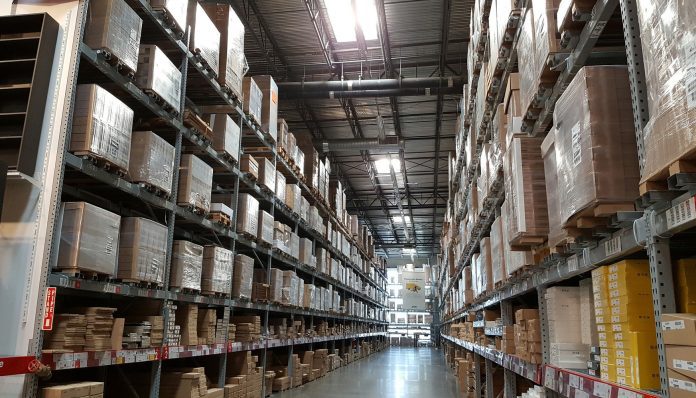Fabio Belloni, co-founder and chief commercial officer at Quuppa, explores the relationship between RTLS and IoT in the manufacturing industry and how organisations can reap the benefits.
The market for Real Time Location System (RTLS) technologies is growing rapidly, with a wealth of new applications emerging across healthcare, manufacturing, retail, sports and lots of other verticals. In fact, with increased adoption across these sectors, the market is expected to grow to $10.3 billion by 2025.
RTLS provides real-time positioning on people or objects – in both indoor and outdoor environments and is the natural complement for Location Based Services (LBS). LBS helps businesses use the data for insights on how to improve overall performance, efficiency and profitability.
In today’s business landscape, with continuous pressure on operational efficiencies, increased profit margins and enhanced customer satisfaction are essential to get ahead of the competition. Combined with IoT devices, the technology has the potential to transform manufacturing industries, and open up new revenue dynamics by speeding up production processes, monitoring development cycles, predictive maintenance, as well as managing warehouses and inventories.

For example, incorporating RTLS technology into production lines allows businesses to track specific workpieces and gather insights into how the equipment is being used and assess the overall efficiency of the supply chain. Accessing data in this way means any inefficiencies in day-to-day operations or bottlenecks can be pinpointed and alleviated straight away.
We have seen concrete examples where the production capability has increased more than 30% by maintaining the same working resources and hours. Eliminating these problems as they arise ultimately helps streamline operations and reduce costs. Similarly, knowing when process deviations happen helps businesses to catch errors before products reach customers.
In addition, an ongoing issue within the manufacturing and logistics industries is knowing where to find equipment. This has become even more difficult because of COVID-19, with only a limited number of workers allowed in specific areas at a time. What’s more, in all industries, any time spent searching for equipment contributes to a loss in revenue.
Placing RTLS tags on all equipment means workers know where assets are at all times – to the nearest sub-meter. In addition, by placing tags on all equipment and machinery, managers can send maintenance quicker by knowing their exact locations. What’s more, knowing the usage data of a machine means workers can better estimate when to schedule routine maintenance so that it does not break down in the first place.
Worker and equipment safety is another key concern, particularly in large facilities where people come and go every-day. One-way RTLS, LBS, and IoT can benefit industries is through controlling assets. RTLS can be implemented at doors, within visitor ID badges, on mobile phones or keycards to prevent unauthorised access to certain areas of facilities.
Similarly, the tags can warn workers that they are entering a high-risk zone and check whether a worker is wearing the correct personal protective equipment (PPE) when they enter the site, ensuring businesses keep up with compliance and security regulations.
But there are a few key considerations to keep in mind to find success with Location Based Services.
Future needs
Many businesses tend to think of Location Based Services as single applications and, as a result, end up budgeting for the minimum viable solution instead of one that will meet their mid- and long-term needs. It’s important to remember that the value from RTLS comes from taking a holistic approach, considering both short- and long-term needs of the business. Yet such an approach needs to be pragmatic as well, so that the chosen RTLS can satisfy multiple use cases at once; creating solution silos is effective to start with.
Realistic expectations
While we’ve witnessed tremendous growth and increased adoption in location services, there’s still going to be pain points. End users need to be educated to ensure they don’t have unrealistic expectations and can solve problems as they arise. Taking the time to fully understand how the product works, matching the desired outcome with the needed execution budget, will help prevent problems in the future.
Software types
Location software has different layers and complexities, so understanding what type of software will work best for a company’s applications is key. Consider what you want to achieve and find the best solution that aligns with your business strategy. In this respect, adopting from the start an open and versatile RTLS platform is key for ensuring flexibility among different LBS and SW application solutions.
Avoid shortcuts
After the initial set-up, it’s tempting to skip testing in real-word conditions but cutting into the testing phase often ends in disaster. Businesses need to understand how the solution will scale in multiple scenarios before rolling the technology out at scale. Also here it is important matching the budget and project requirements, to ensure a sustainable scalability plan and a clear estimate on the total cost of ownership (TCO).
As we look to the future, it’s an exciting time for RTLS, LBS, and IoT. More and more businesses across verticals are reaping the benefits, resulting in improved performance and revenue. For those yet to adopt the technology, now is the time – or face being left behind.

